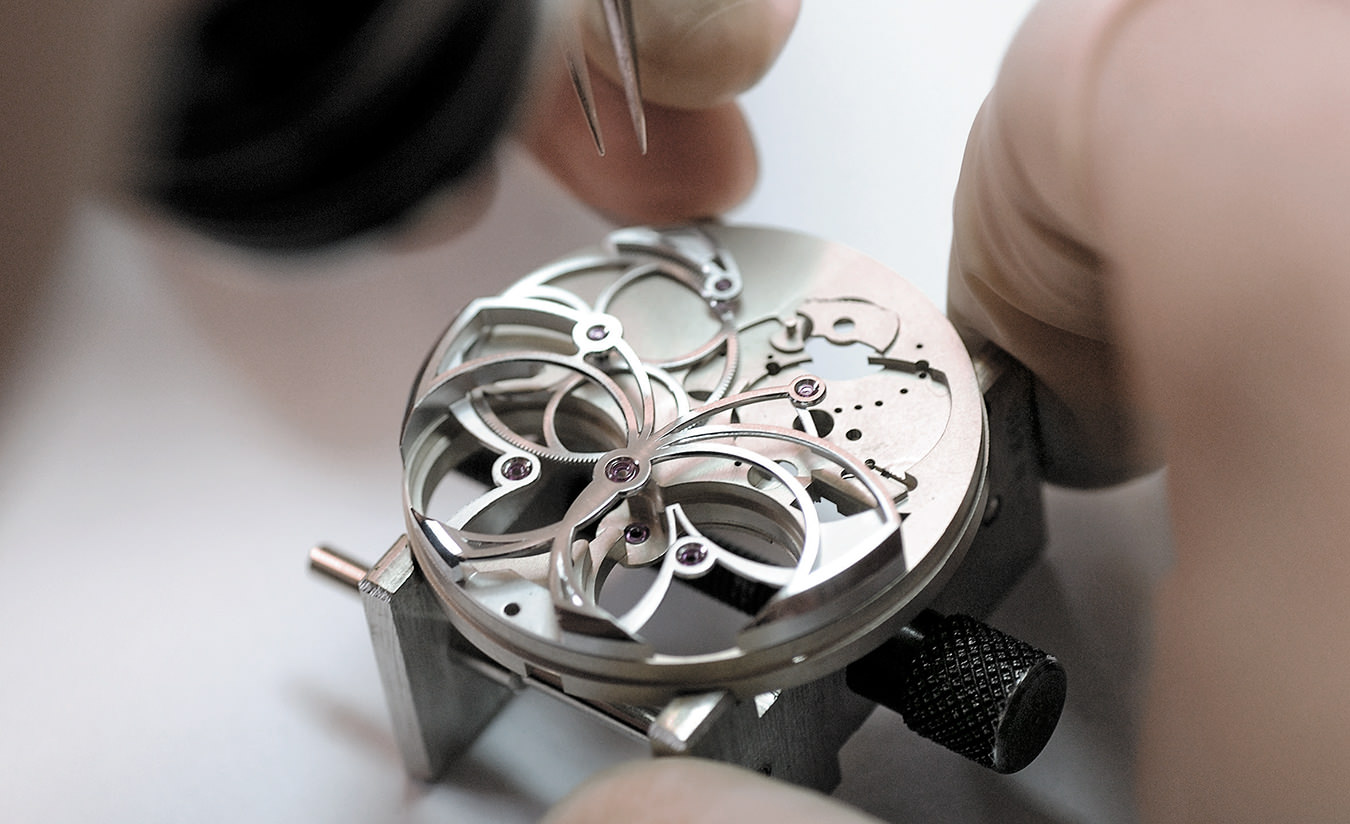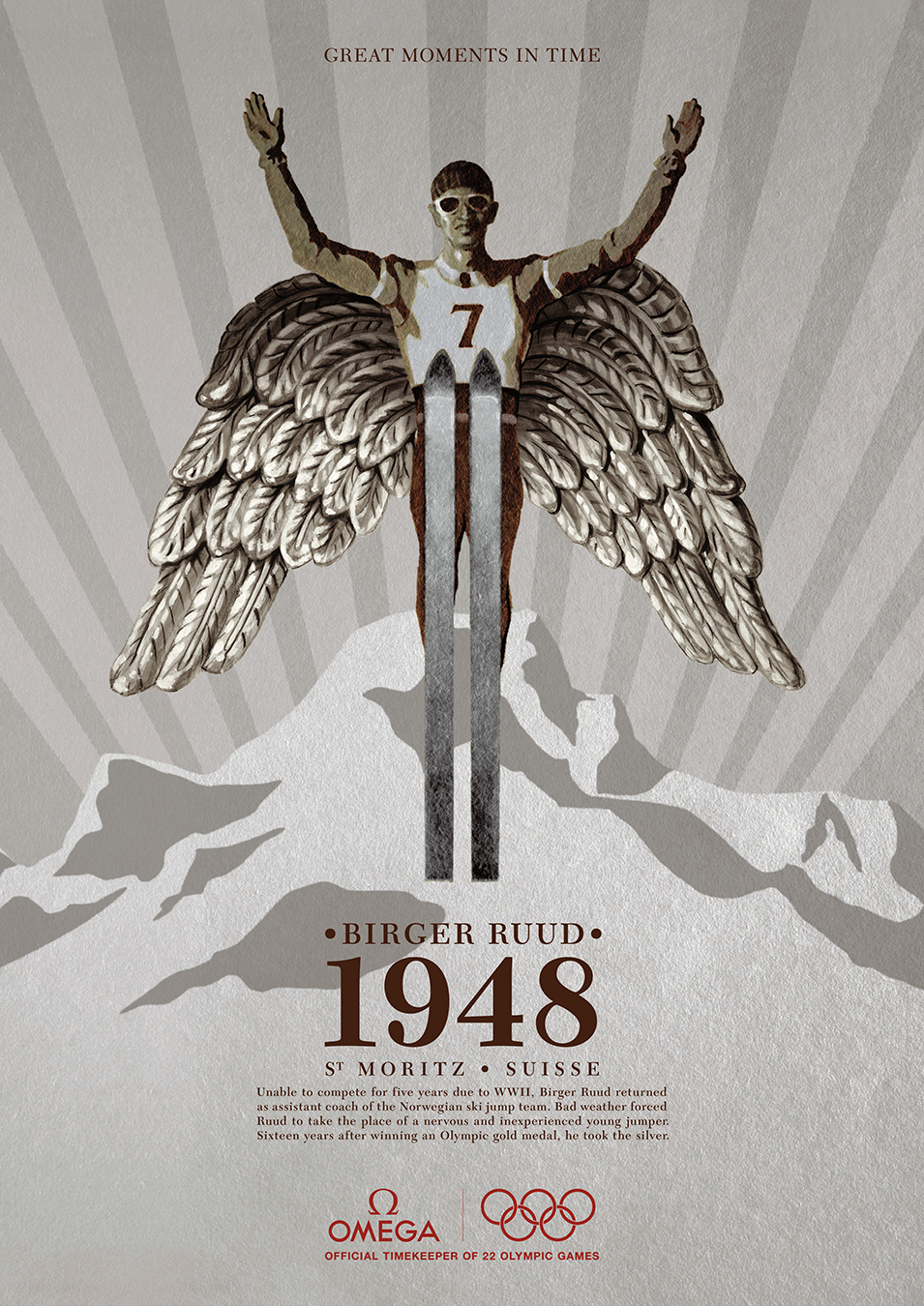-
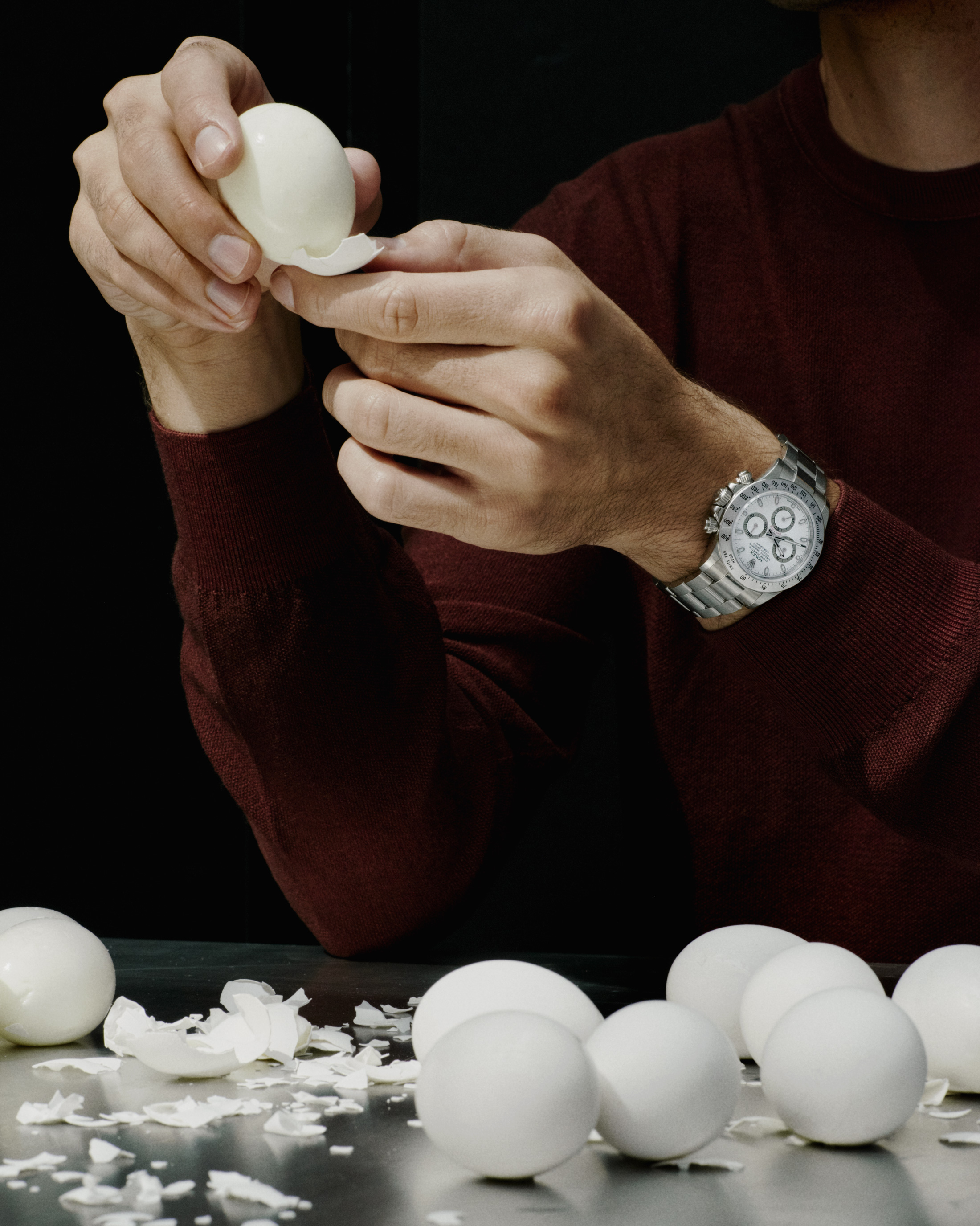
Of all the Rolex models, the Daytona is king.
Prop styling by Grace Harnett. Sweater by Ermenegildo Zegna.
-
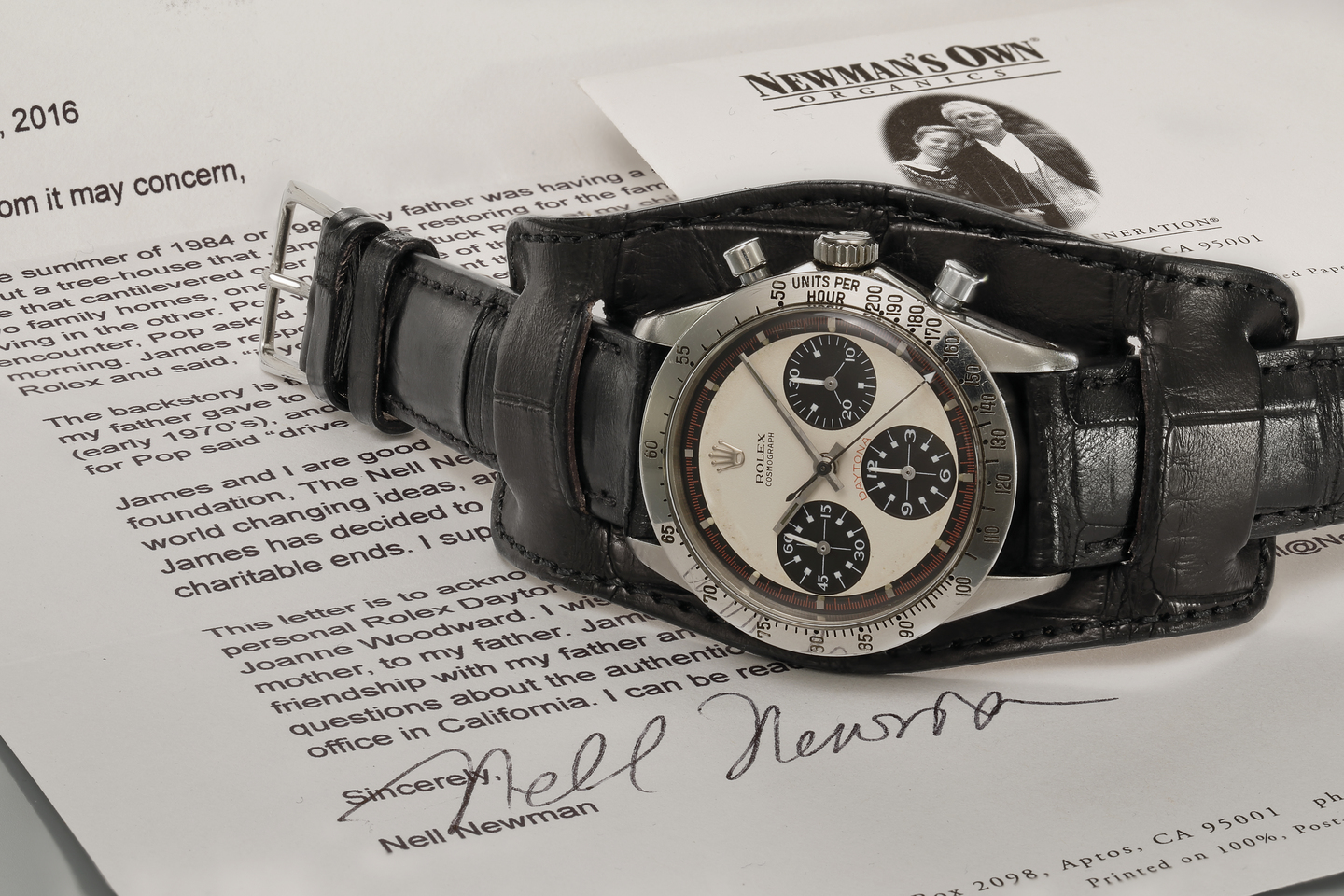
Among the Daytona models issued, the so-called Paul Newman is the most sought-after.
-
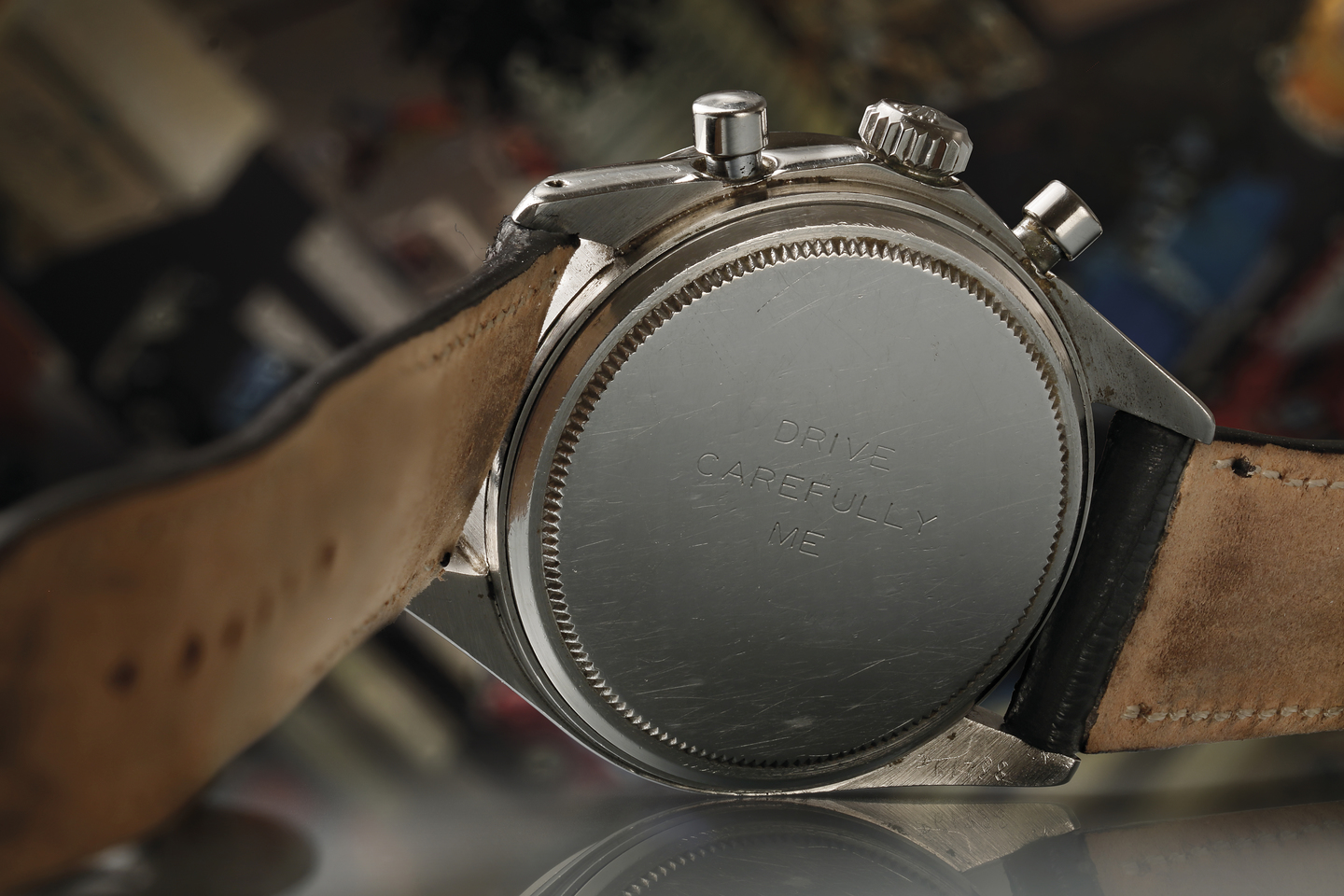
Paul Newman’s Daytona was a gift from his wife, Joanne Woodward, who had “Drive Carefully Me” engraved on the back.
-
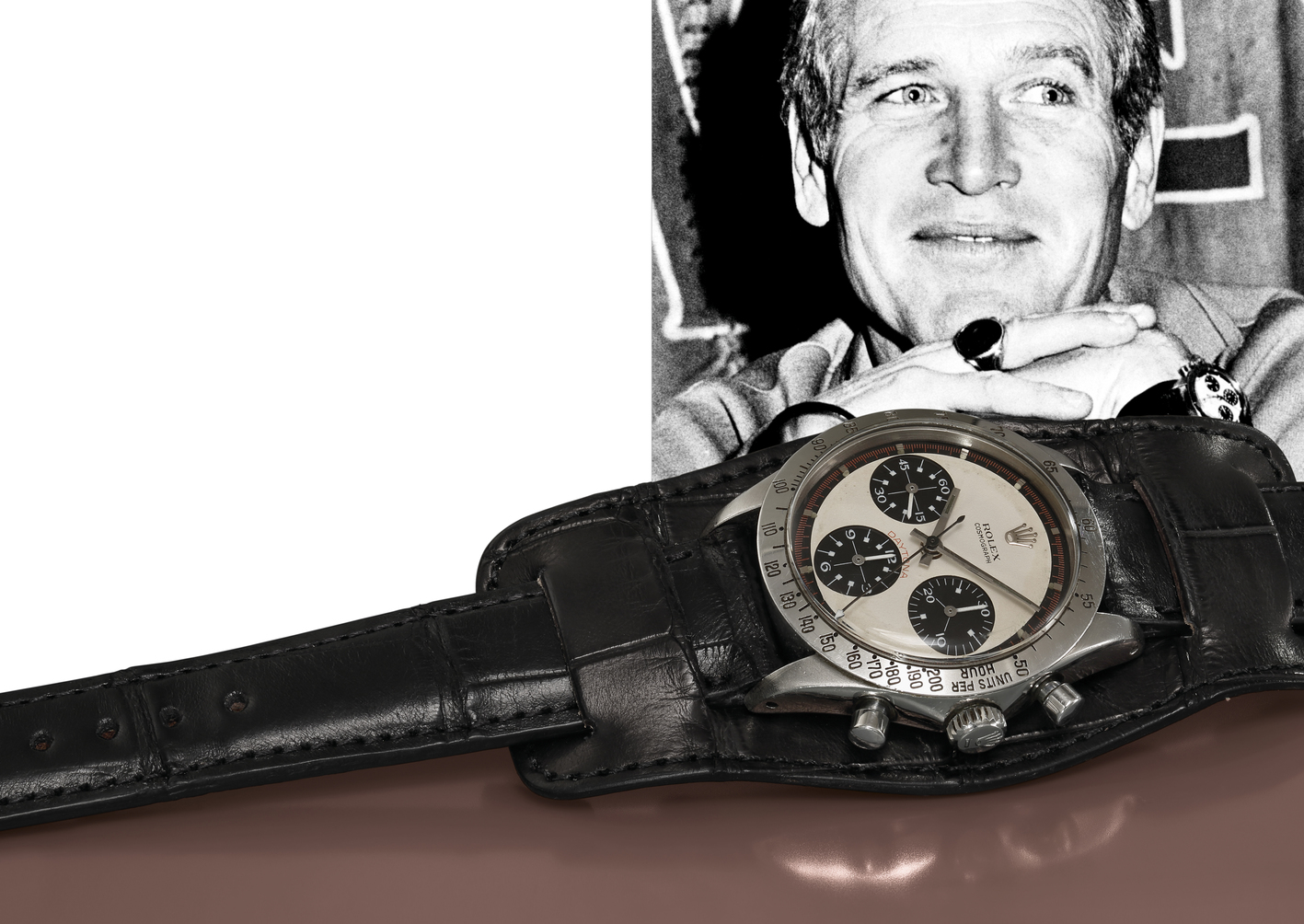
Phillips auctioned the actual Paul Newman Daytona for $17.8-million (U.S.) in New York on October 26.
The Allure of the Rolex Daytona
All about the world’s most collectible watch.

The world’s most collectible watch is now officially the world’s most expensive watch. A Rolex “Paul Newman” Daytona Ref. 6239—the actual one owned by Paul Newman—sold for $17.8-million (all currencies U.S.) at an auction in New York on October 26 by Phillips in association with Bacs & Russo. The “PNPN”, as it’s being dubbed by collectors, is considered the most iconic wristwatch of the 20th century. Made in 1963, the timepiece was a gift to Newman from his wife, Joanne Woodward, who engraved “Drive Carefully, Me” on the caseback. (Newman then gifted it in 1984 to James Cox, the former boyfriend and now close friend of Paul Newman’s daughter Nell.)
Its sale breaks the record for the most expensive watch ever sold at auction, which previously was a Patek Philippe Ref. 1518 that went for $11-million. It also defeats the record for the most expensive Rolex sold at auction: 5.1-million Swiss francs ($5.1-million) for a 1952 Rolex Ref. 6062, which was sold in Geneva by Phillips. The same auction also fetched the highest price—until now—for a Rolex “Paul Newman” Daytona, a Ref. 6263, known among collectors as “the Legend,” which sold for 3.7-million Swiss francs ($3.7-million).

Rolex is the most collected watch brand in the world, and of all the Rolex models, the Daytona is king. Aficionados nerd out over every slight variation implemented since it was introduced in 1963. The “Paul Newman” Daytona, the most sought after, was officially named the Rolex Cosmograph Daytona. It was produced in seven different references from 1963 to the 1970s, but wasn’t called the Paul Newman until the 1980s when it began to gain traction as a collector’s piece. Mechanically, it is no different from other Rolex Daytonas of its era, except for the design of the dial. It is instantly recognizable for the “square lollipop” ends on the markers, or hash marks as they’re called, on the subdials; its art deco font; the contrasting, coloured seconds scale along the periphery of the dial; and the placement of the Daytona signature over the lower subdial.
Rolex is the most collected watch brand in the world, and of all the Rolex models, the Daytona is king.
The Legend, the next-most-expensive Daytona sold at auction, is the rarest variation on the Paul Newman because it’s an Oyster watch case with a screw-down in yellow gold. “It’s the first I’ve seen,” says long-time Rolex collector Paul Boutros, Phillips’ senior vice-president and head of watches, Americas. In his introduction to the catalogue description, he enthuses, “There are some watches so elusive and so mythical that they stun even the most seasoned and weary of collectors. For decades, collectors and Rolex scholars debated the possibility of a yellow gold Paul Newman with screw-down pushers. Literature did not confirm the fact, nor did Rolex ever comment on the subject.”
The Paul Newman dial was ultimately discontinued because, despite the fact that it is currently the hottest vintage watch on the market, it was a poor seller during its time. Part of the draw—and the draw for Rolex watches in general—is the sheer quantity produced. Rolex has been making watches for over 100 years, and today it makes about one million a year.
“Rolex is without a doubt the most powerful brand in watches,” says Boutros. “Its fame is a result of the exceptionally high quality of their watches and the enduring appeal of their designs. Since they are so robustly built, collectors do not have to pamper them when worn, and the controlled quantity produced contributes to the number of collectors looking for Rolex watches, which for our clients I estimate to be three to four times more than any other brand.”
Rolexes aplenty, then, yet certain models are routinely described as rare. This is because Rolex collections are produced in series, or batches, and slight variations in some series make them more collectible than others. “With so many historic models, each with many subtle variations, fans of vintage Rolex watches find them fascinating and intellectually stimulating to collect,” says Boutros. This minute attention to variances makes it seem like there are a lot of them, but in fact there have been few significant changes made to the Daytona over the years. Here is a brief timeline.
Tracking the Rolex Daytona
1963: The first Daytona, Ref. 6239, was introduced under the name Cosmograph and was Rolex’s first chronograph with contrasting subdials. It was also the first to have a tachymeter scale engraved on the metal bezel rather than printed on the dial.
1964: The Daytona signature was introduced to commemorate Rolex’s sponsorship of the motor race at Daytona Beach. Models produced over the next few years can be dated according to the placement of the logo: from 1964 to 1967, Daytona was placed at 12 o’clock under the word Cosmograph. From 1967 onward, it appeared above the subdial, at 6 o’clock.
1965: Oyster was added to the dial signature as a result of the addition of screw-down chronograph pushers to the case, making it waterproof. Previously, the Daytona had pump pushers, which if activated underwater would flood the movement.
1988: The next major change came with Ref. 16520, fitted with an automatic movement (the Rolex Calibre 4030), based on the Zenith El Primero Calibre. (It was common in that era for brands to use base calibres made by other manufacturers. The previous manual-wind movement was based on the Valjoux Calibre 72.) This model was also the first to have a crystal made of scratch-resistant sapphire rather than acrylic. The case diameter grew from 36mm to 40mm (many collectors prefer pre-1988 Daytonas because of their smaller size). Rolex also added the words Superlative Chronometer Officially Certified to the signature on steel models in 1988, referring to the fact that all movements are officially certified according to intense accuracy and wear standards by the Official Swiss Chronometer Testing Institute (COSC). Prior to that, only the gold manual-wound Daytonas were chronometer-certified.
2000: Rolex added an in-house movement, Calibre 4130, to the Daytona Ref. 116520. The 4130 is a high-performance chronograph movement with a vertical clutch and a Parachrom balance spring, which translates to better amplitude and greater accuracy. Subtle design tweaks in the Ref. 116520 included switching the positions of the small-seconds subdial and the hour totalizer subdial, and moving the two upper subdials slightly above the centre axis of the dial. There were also wider hour indexes, slightly longer lugs, and a more polished case.
2016: A milestone year for the Daytona with the introduction of what is widely referred to as the perfect combination of elements: a steel Cosmograph Daytona with a black Cerachrom bezel and the automatic Calibre 4130. Design-wise, the black bezel is reminiscent of that on the 1965 Daytona (with screw-down pushers), but back then it was made of Plexiglas. Cerachrom, a proprietary ceramic formulation developed by Rolex, is vastly superior: it is corrosion resistant and virtually scratch-proof, and will not fade under UV rays. If you are thinking about investing in a watch right now, this is the one to buy—if you can get it.
2017: Rolex introduced the gold Daytona on an Oysterflex rubber strap. As the first in the series to be produced in precious metal with rubber strap and Cerachrom bezel, this is also destined to become a collector’s favourite.
Photos of the Paul Newman Daytona courtesy of Phillips.
An older version of this article was published on October 23, 2017.
_________
Never miss a story. Sign up for NUVO’s weekly newsletter, here.

